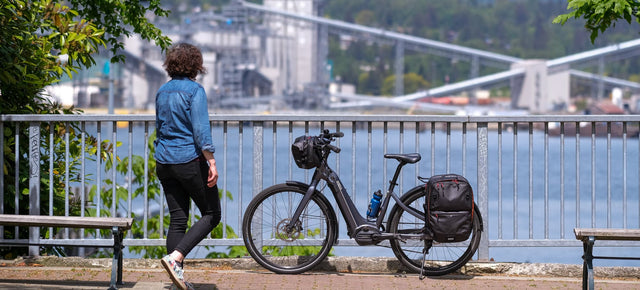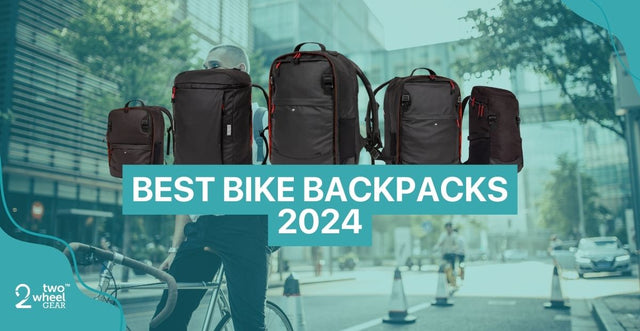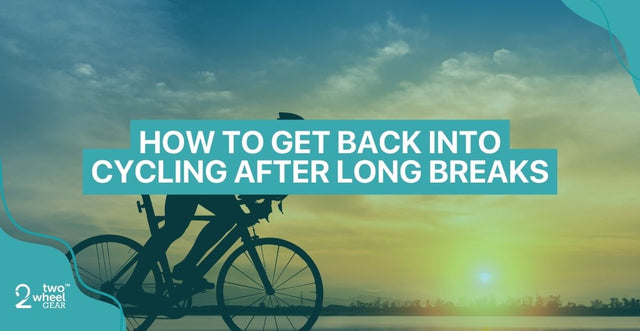Common Bike Issues & How to Fix Them
We love bikes for the low maintenance, hassle-free mode of transport they provide - whether we’re commuting to the office or riding through the mountains. Unfortunately, though, you can still be faced with certain running issues.
It’s tempting to off load the problem onto a bike mechanic to solve, but for common issues this isn’t always necessary. By getting more familiar with how to fix (and maintain!) certain parts of your bike, you can save money on mechanic fees in the long run.Here are some common bike issues, and guidance on effective DIY solutions!
Skipping Chain
Chains are kind of central to your riding experience - as in, they literally make the bike move! - but they can be tricky to deal with, too. One of the most common problems riders face when out and about is a chain that doesn’t shift correctly, or skips a lot when you’re changing gears. Chains require tension to efficiently regulate the derailleur (the part of your bike that shifts the chain from one sprocket to the next). If you notice your bike chain beginning to skip, loose cables can often be the culprit. It’s natural for bike cables to stretch over time, but when older cables stretch too far it can spell trouble for your chain.
Here’s how to fix it:
- Flip your bike upside down so the seat is on the pavement. Then manually pedal forward until your derailleur is on the smallest cog. Press the shifter once to see if the chain moves up a gear. If nothing happens, you need more tension.
- Turn your barrel adjuster (the small part on the backside of your derailleur) all the way in by twisting it away from you.
- Check the shifter again to see if the chain will automatically shift to the smallest ring in the cassette. If not, keep adjusting the barrel adjuster to add tension until you find that sweet spot!
- If you still can’t shift without skipping, check out the cable for slack or tightness (it exits from the derailleur). Adjust the tightening mechanism until your bike can change gears without skipping.
Remember, applying too much lube to your chains can cause a build up of stickiness and grime and cause your chains to shift. It’s worth giving your chain a clean every so often with dish soap and a toothbrush to help it move more smoothly!
Punctures/Flat tires
Anyone who’s ever ridden a bike has likely experienced flat tires or punctures - but the good news is, you don’t always need a whole new tire. We always recommend you carry spare tubes, a repair kit, bike pump and multi-tool when out riding (the Commute Top Tube or Commute Seat Pack Small are our go-to bags for this!)

The obvious action for beginner riders is to inspect the tire first to see if there’s a puncture (Often you can see the object, maybe a nail or small screw). However, issues can also come from the wheel or the tube itself, so you may need to dive a bit deeper to identify the source of the problem.
Remove the wheel from your bike, then the tube. Inspect the wheel, tire and tube and you should be able to find the location of any tear or puncture, and patch it up (or replace the tube all together). For more in-depth instructions, REI has a great step-by-step guide on the best way to do this.
Wheel alignment
If you’ve had to remove your wheel to find or patch up a puncture, one way to know you’ve put it back on a little off centre is because you’ll feel it rubbing up against the brake pad.
If you slid the skewer all the way out to remove your wheel, you might have dropped one of the two skewer springs - which help keep your wheel centered - or reinstalled them backwards. Check to make sure the narrow side of the spring is next to your hub, which should keep it centrally aligned.
Loose bolts
Nobody likes to hear too much rattling during any type of commute, but bike riders often find it particularly worrisome! The good news is, with the help of a multi-tool, loose bolts are normally a pretty easy bike problem to fix.

Bolts can often be loosened by friction and pressure in areas like the seat post, handlebars, and stem. It’s a good idea to regularly check up on them to make sure they’re kept just tightly enough in place. Over-tightening should be avoided, though, as too - tight bolts can get rounded and later on, ruin the bike’s threads (and leave you with an expensive repair job!)
Hex wrenches are great at tuning bolts and giving you control over how much force you need to apply. We love Park Tool’s I-Beam Multi-Tool.
Don’t forget to sign up to our newsletter to keep up to date on product releases and get first dibs on everything. You’ll also receive 10% off your first order when you sign up! Don’t forget to follow us on Facebook or Instagram to share our #TWGAdventures.







0 commentaires
Il n'y a pas encore de commentaires. Soyez le premier à en poster un!